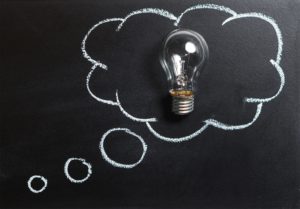
We want to make getting stellar healthcare as easy as possible, so we have composed a list of our top 3 most frequently asked questions to help educate in our beliefs and ensure complete comfortability. Our top 3 areas of expertise are: Food Allergies/Nutrition, Hormone Replacement Therapy, and LDN in treating autoimmune ailments. Below is the top question asked per each specialty.
1. Up to What Age s it Considered Safe for a Woman to Receive Hormone therapy?
The safest way for women to use hormone therapy is starting at perimenopause to early menopause and continuing on. Estrogen has a strong vasodilating effect, which means it opens up blood vessels. It also prevents plaque from forming in arteries. If a woman waits until plaque has formed, then takes estrogen, there is a slight increase in danger of flushing away some of that plaque, which could lead to a stroke or heart attack. On the other hand, if a woman is forming plaque, she may be a risk to not take estrogen, since it may protect her from further formation of plaque and narrowing of arteries. The estimate of safe time to start estrogen before plaque forms, is within 10 after menopause. It is also not safe to take hormones, such as estrogen; then stop; then start again. Slow and steady is the best course.
The other point of importance is that there are estrogen receptors all over the body. Brain, bones, skin, genitals and even the heart contain estrogen receptors. Theses tissues do not work very well when deprived of hormones. If a woman wants optimal health in these tissues, it is safe to continue her hormone therapy into old age.
2. How can Food Allergies Cause Weight Problems?
Food allergies are common, especially in people who have environmental allergies. But they react in a special way to promote weight gain. Eating a food that is an allergen, calls the immune system to task. Antibodies are produced to kill the food and swelling occurs to “dilute” the poison. Sometimes the swelling can be present in a specific organ but often it is throughout the body, manifesting in up to 5 pounds of fluid that a person may carry with them. The increased inflammation may cause pain, fatigue, and strain on the ability to fight real viruses.
There is another link to food allergies and weight: addiction. Food allergies can stimulate endorphin secretion which makes people feel happy. Without the offending food, patients may actually go through a withdrawal reaction. The symptoms of this are cravings for this food, accompanied by irritability. This is a biochemical reaction not a weakness of will. The information that people experiencing this need to know is that the withdrawal, like drug withdrawal, only lasts a few days, usually three for food reactions. From then on, the patient is no longer under the thumb of cheese, bread, chocolate or any of the foods they crave.
Testing can be done for food allergies with a simple blood test. Elimination of the foods that induce antibody production will not only calm inflammation and immune strain, but will decrease fluid retention within a few days! Cravings can be controlled with certain solutions and the person is on the way to an easy way to help control their weight.
One of my favorite cases was an overweight woman who put a diet together for herself. She ate yogurt for breakfast, cheese sandwich for lunch and cottage cheese for dinner. Essentially, all her choices for meals were based on her cravings for her favorite food, dairy! I advised her that I could make an educated guess of what she was allergic to without testing. Somehow, I was able to convince her to substitute other foods. She returned within a few weeks having lost over 10 pounds, with no cravings, in control of her diet and well on her way to the weight loss she desired.
3. I have heard that low dose naltrexone is helpful for autoimmune diseases, such as rheumatoid arthritis and pain syndromes. How does it work?
Low dose naltrexone is a very good therapy for autoimmune disease. It was originally developed for treating drug addicts. It’s mechanism is to block endorphin receptors. Endorphins are “happy hormones”, so a drug addict taking this would not be able to get high. You may wonder why a non-addicted person would want to block their production of happy hormones. Low dose naltrexone is about 2-3 mg vs. the 50 mg dose used for drug addicts. It temporarily blocks endorphin receptors for about 4 hours. What happens during those four hours? The body sensing a block, works hard to push past the block, and when it drops, the production of endorphins is drastically increased. Endorphins not only make people feel happy, but they actually affect the immune system. If the immune system is overactive, such as in autoimmune disorders like rheumatoid arthritis, it quiets the attack on the body’s own tissues. It also calms inflammation and decreases pain. For cancers, endorphins stimulate the body’s immune system to hook into cancer cells and tell them to kill themselves. Pretty cool.
Using low dose naltrexone is effective by enhancing the body’s own hormone production, which is responsible for these actions. It is such a tiny dose, that side effects are rare, and it is quite safe if prescribed by someone trained in using this.